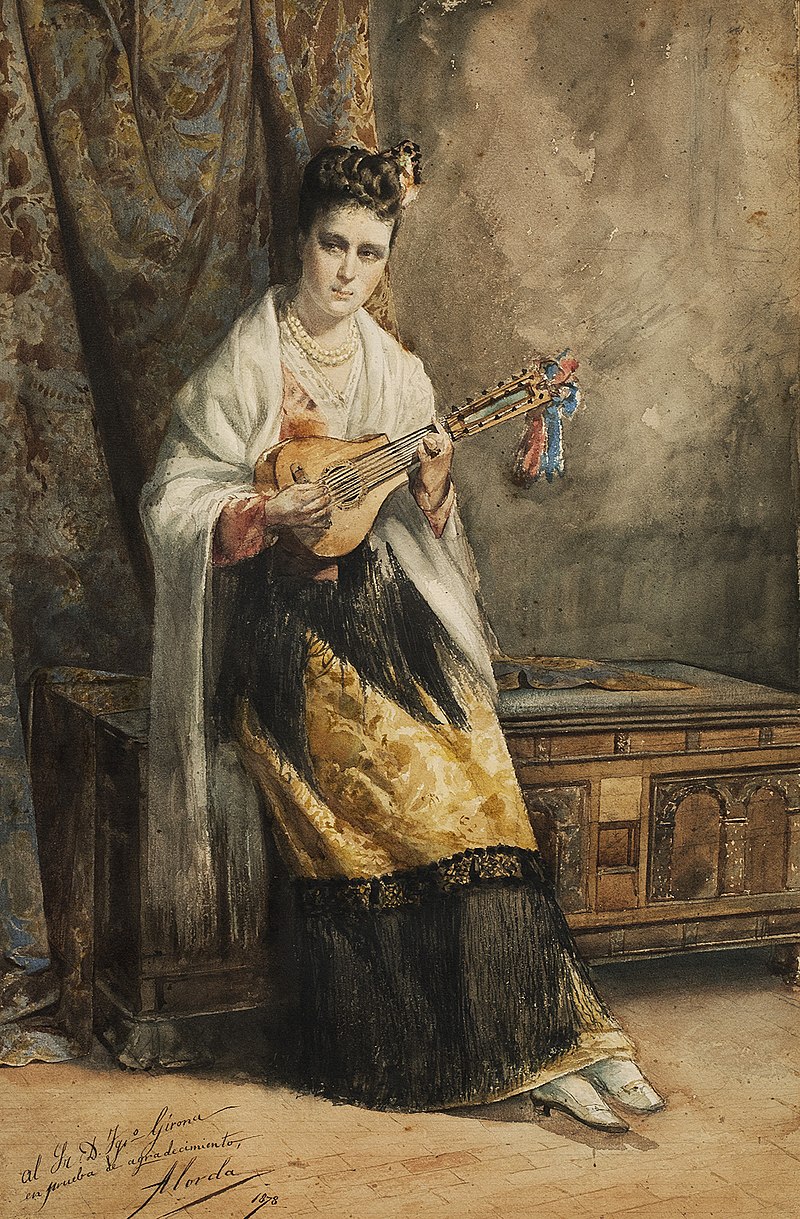The bandurria, or also known as the mandurria, is a stringed music instrument that belongs to the lute family. It has a built and design that is derived from the guitar and cittern. Today, the bandurria is often made with a small and pear-shaped wooden body, it also has a flat back and a short neck, with five to seven paired sequences of strings that are hitched to a guitarlike bridge. The bandurria’s strings are typically tuned in fourths which gives the instrument a great facility and uniformity when it comes to fingering. The bandurria has a fingerboard with 12 fixed metal frets, and it is traditionally played along with a short and hard plectrum.
The bandurria, is played in several styles of popular and folk music. Experts believe that this instrument was first used in Spain during the 16th century and the Spaniards bought it to Latin America where it is still commonly used in Peru. The bandurria is called as the mandurria in the Balearic Islands of the Mediterranean Sea.
Before the 18th century, the bandurria was made with round back, just like the mandore. When the 18th century came, the bandurria had become a flat-backed instrument that have five double courses of strings, that are tuned in fourths. During the Medieval period, the bandura had three strings, and when the Renaissance period started, the bandurria gained a fourth string. It was only during the Baroque period when the bandurria had 10 strings.
Bandurrias All Around the World
Spanish Banduria
According to studies, a man named Juan Ruiz in Spain first mentioned the word mandurria during the 14th century in book entitled Libro De Buen Amor. Not long after that, Juan Bermudo described the bandurria as a three-stringed instrument in his book entitled “Comiença el libro llamado declaraciõ de instrumentos” which was published in 1555. Aside from that, Bermudo he also mentioned some other types of mandurria that has four or even five strings. The Spanish dance called zapateo, is a dance that is derived from the Spanish zapateado, this was popularized tobacco cultivators who came from the Canary Islands. In order to do this dance properly, it is accompanied with a bandurria along with some other instruments during the 1900s.
Bandurria in the Philippines
In the Philippines, they have a 14-string bandurria that is often used in several Philippine folkloric songs. This harp bandurria has 16 frets and a shorter neck compared to the typical the 12-string bandurria. Since the Philippines was colonized by Spain for almost 300 years, most experts believe that the bandurria was bought by the Spaniards and evolved in the Philippines from 1521 to 1898. In the Philippines, the bandurria is often used in an orchestra of plucked string instruments they call the rondalla.
Bandurria in South America
Aside from the Philippines, other countries also have their own version of the bandurria. That is why in South America, you will be able to find several different varieties of bandurria in South especially in Bolivia and Peru. The bandurria in these countries have four courses, compared to the traditional Spanish bandurria which have six courses. These four courses are sometimes double, triple or quadruple. These bandurrias are tuned like a guitar compared to the the fourths tuning that is used on the Spanish type bandurria. In Lima, Peru, the harp and bandurria duos were common used during the early 20th century. Today, people in Peri still play bandurria and they often accompany it with the popular vals criollo or vals peruano.

